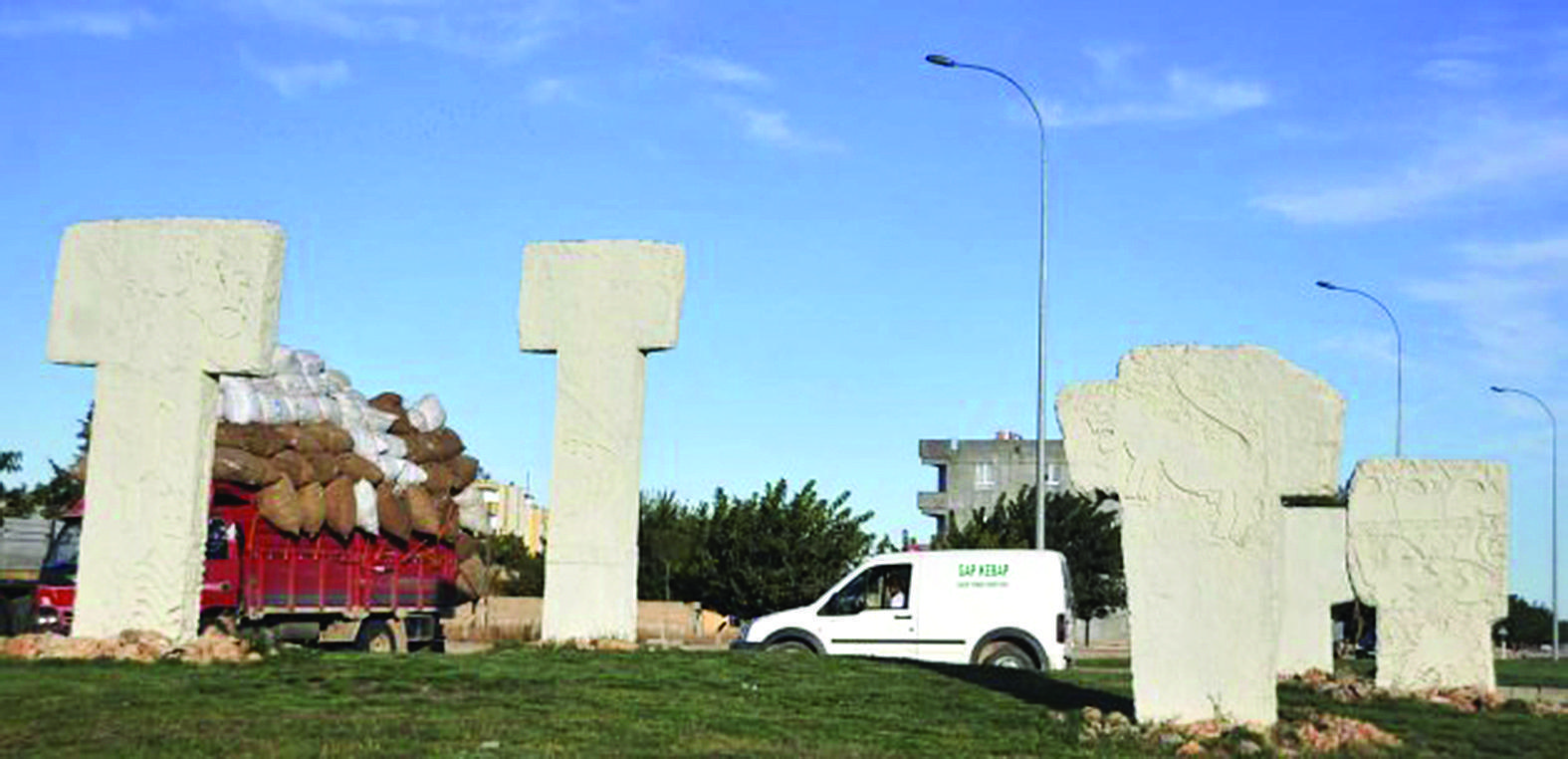T-shaped stones tell story of Göbeklitepe
ŞANLIURFA
 A path to Göbeklitepe, a 12,000-year-old site in the southeastern province of Şanlıurfa often referred as the “point zero of history,” has been decorated with large stone plaques that tell about the ongoing excavation work there.
A path to Göbeklitepe, a 12,000-year-old site in the southeastern province of Şanlıurfa often referred as the “point zero of history,” has been decorated with large stone plaques that tell about the ongoing excavation work there. As part of a joint project by Turkey’s Culture and Tourism Ministry and the United Nations Development Programme (UNDP), sculptors engraved the results of excavation findings on stones two-and-a-half meters in height and one meter in width.
Nihal Dörtkardeş, the coordinator of the project, told Anadolu Agency that Göbeklitepe was receiving increasing attention but that visitors were facing difficulties in finding the site.
“Göbeklitepe has an 11,500-year history. We decided to erect these plaques since there are no road signs here,” she said, adding that 10 such T-shaped stones were erected on the four-kilometer-long road leading to the site.

The T-shaped stones are inspired by the findings at the location. Archaeologists had found such stones with figures of wild animals on them.
Göbeklitepe, a site on the UNESCO World Heritage Temporary List, is located 15 kilometers from the center of the southeastern province of Şanlıurfa.
Archaeologically categorized as a site of the pre-pottery Neolithic A Period (c. 9600-7300 B.C.) Göbeklitepe is a series of mainly circular and oval-shaped structures set on the top of a hill.
Excavations began in 1995 under the direction of Professor Klaus Schmidt with the help of the German Archaeological Institute. There is archaeological proof that these installations were not used for domestic purposes, but predominantly for ritual or religious purposes. Subsequently, it became apparent that Göbeklitepe consists of not only one, but many of such Stone Age temples.
Furthermore, both excavations and geomagnetic results revealed that there are at least 20 installations, which in archaeological terms, can be called a temple. Based on what has been unearthed so far, the pattern principle seems to be that there are two huge monumental pillars in the center of each installation, surrounded by enclosures and walls, featuring more pillars in those set-ups.
















